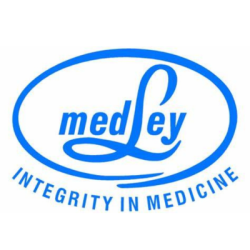SMIC
Digital Conversion in Life Sciences
Digitalization in the pharmaceutical and life sciences industry is an ongoing process that requires collaboration between traditional pharmaceutical companies, technology providers, and regulatory bodies. As technology continues to advance, digital solutions will play an increasingly crucial role in shaping the future of healthcare and drug development.
Our Clients in Pharma & Lifesciences



Fast launches. Personalized medicine. Fewer supply chain disruptions. The demands of life sciences manufacturing have grown. You can meet them with a new kind of facility: a facility of the future that is S, secure, connected, flexible, and compliant to the global industry standards.
We join hands with life sciences leaders every day to develop digital transformation strategies that move them beyond a piecemeal implementation. Together, we’ll create a more agile and connected enterprise that allows you to:
- Speed time to market
- Outperform quality standards
- Maximize productivity
- Protect against security threats
- Streamline compliance
Flexible operations in the pharmaceutical industry involve the adoption of strategies and technologies that allow companies to adapt to changing market conditions, respond to regulatory requirements, and improve overall efficiency in drug development, manufacturing, and distribution. Here are key aspects of achieving flexible operations in the pharma industry:
1. Modular Manufacturing:
- Flexible Facilities: Designing manufacturing facilities with modular and adaptable features that allow for easy reconfiguration and scaling based on production needs.
- Single-Use Technologies: Implementing single-use systems and disposable equipment to reduce the need for complex cleaning and sterilization processes during changeovers.
2. Agile Supply Chain Management:
- Risk Management: Identifying and mitigating risks in the supply chain to ensure a steady flow of materials and avoid disruptions.
- Real-Time Monitoring: Utilizing technology for real-time tracking of inventory, shipments, and production status to enhance supply chain visibility.
3. Digital Twins and Simulation:
- Digital Twin Technology: Creating digital twins of manufacturing processes to simulate and optimize production without affecting actual operations.
- Process Simulation: Using advanced simulation tools to model and analyze different scenarios, helping optimize production processes and resource utilization.
4. Advanced Process Control:
- Automation and Robotics: Implementing automation and robotic systems to improve precision, reduce errors, and enhance the efficiency of manufacturing processes.
- Process Analytical Technology (PAT): Utilizing real-time monitoring and control of critical process parameters to ensure product quality and consistency.
5. Collaborative and Cross-Functional Teams:
- Cross-Training Employees: Enabling employees to have a broad skill set, allowing them to contribute to different aspects of the manufacturing process.
- Collaborative Decision-Making: Encouraging collaboration between different departments, including research and development, manufacturing, and quality assurance.
6. Regulatory Compliance and Quality Assurance:
- Electronic Batch Records (EBR): Transitioning from paper-based to electronic systems for batch record keeping to improve accuracy and compliance.
- Real-Time Quality Management: Implementing real-time quality monitoring and control systems to identify and address issues promptly.
7. Outsourcing and Collaboration:
- Strategic Partnerships: Collaborating with contract manufacturing organizations (CMOs) and other partners to enhance manufacturing capacity and capabilities.
- Outsourcing Non-Core Activities: Outsourcing non-core activities, such as packaging or certain testing processes, to focus on core competencies.
8. Continuous Manufacturing:
- Continuous Processing: Adopting continuous manufacturing approaches to reduce batch processing time and enhance overall production efficiency.
- Integration of PAT: Integrating Process Analytical Technology into continuous manufacturing processes for real-time monitoring and control.
9. Lean Manufacturing Principles:
- Kaizen and Continuous Improvement: Embracing lean manufacturing principles to continuously identify and implement improvements in efficiency and waste reduction.
- Six Sigma Methodologies: Applying Six Sigma methodologies to reduce process variability and enhance product quality.
10. Adaptive Clinical Trials:
- Decentralized Trials: Embracing decentralized and virtual clinical trial models to enhance flexibility and patient participation.
By implementing these strategies and technologies, pharmaceutical companies can achieve more flexible and adaptive operations, allowing them to respond effectively to industry changes, market demands, and regulatory requirements.
1. Drug Discovery and Development:
- Computational Biology and Bioinformatics: Utilizing computational tools and algorithms for analyzing biological data, predicting drug interactions, and identifying potential drug candidates.
- AI and Machine Learning: Accelerating drug discovery by analyzing vast datasets, predicting drug efficacy, and optimizing trial designs.
2. Clinical Trials:
- Electronic Data Capture (EDC): Streamlining data collection and management in clinical trials through digital platforms.
- eClinical Systems: Implementing integrated electronic systems for managing various aspects of clinical trials, including randomization, data capture, and monitoring.
3. Regulatory Compliance:
- Electronic Regulatory Submissions: Using digital platforms for submitting regulatory documents and managing compliance with regulatory requirements.
- Track-and-Trace Technologies: Implementing digital solutions for tracking and tracing pharmaceutical products to ensure compliance with safety and regulatory standards.
4. Manufacturing and Supply Chain:
- Industrial IoT (IIoT): Employing sensors and connected devices to monitor and optimize manufacturing processes, improving efficiency and quality control.
- Blockchain: Enhancing supply chain visibility, traceability, and security by implementing blockchain technology.
5. Data Analytics and Real-World Evidence:
- Big Data Analytics: Analyzing large datasets, including real-world evidence, to gain insights into treatment outcomes, disease patterns, and healthcare trends.
- Predictive Analytics: Employing predictive modeling to forecast disease trends, optimize treatment plans, and improve resource allocation.
6. Artificial Intelligence in Healthcare:
- Diagnostic Imaging: Using AI algorithms for more accurate and efficient interpretation of medical imaging data.
- Drug Safety Monitoring: Enhancing drug safety surveillance through AI-driven analysis of adverse event reports and other safety data.
WhatsApp us